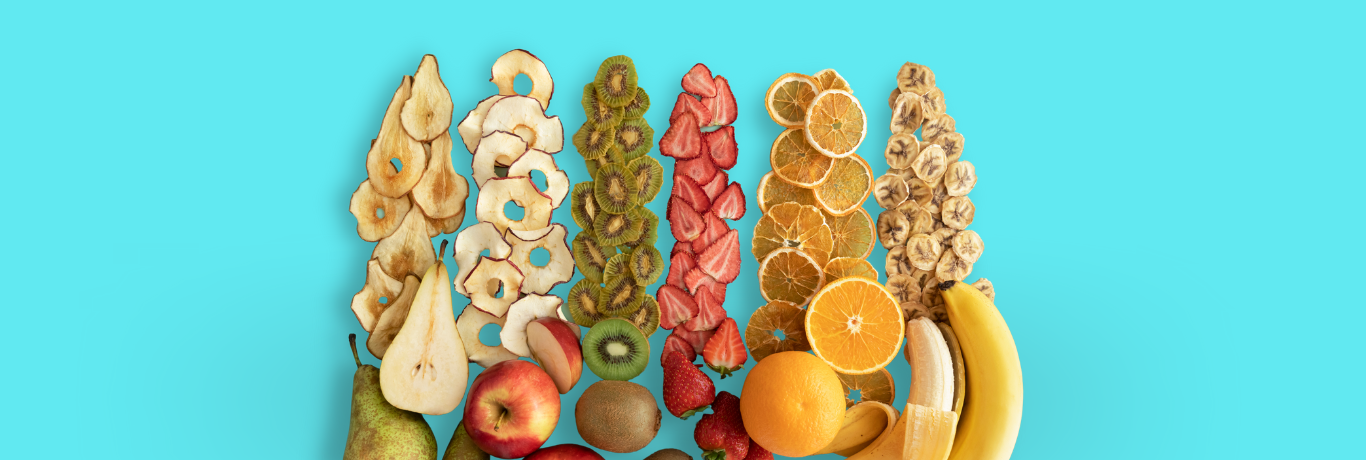Don't have the time to read the entire blog? No worries, we have got you covered! Listen to the audio version of the blog :) |
When it comes to snacks, dried fruits are the healthiest and tastiest options. They are heavily favored by diabetics since they are densely packed with a variety of nutrients.
Dry fruits for diabetes? Is dried fruit good for diabetics? Yes, we do have a lot of questions, but let me first ask you this question. When you hear the term “dry fruits,” what comes to your mind? You must be thinking of almonds, cashews, dates and walnuts, if I’m not mistaken. Yes, these are among your excellent dry snacks, but since when did a nut turn into a fruit?
The difference between nuts and dried fruits is something that many people get wrong. At this point, I believe it is crucial to understand the differences.
Difference between Dried fruits and Nuts
Simple fruits that have been frozen and dried to remove the water content result in dried fruits, which are heavy in sugars. Various types of dried fruit include raisins, dates, prunes (dried plums), figs, apricots, and peaches are some common dried fruits. Also available are fruits such as dried mango, pineapple, and berries; however, these are frequently dried with additional sugar.
Nuts are technically edible seeds of different plants that resemble fruits; they are not dried in this way. These seeds typically have a tough shell around them. Almonds, cashews, Brazil nuts, walnuts, pecans, macadamia nuts, pistachio nuts, and pine nuts are a few examples of nuts.
Now that we are aware of the difference, let’s consider the subject of dry fruits for diabetes.
Is dried fruits good for diabetics?
Dried fruits are good sources of antioxidants, contain good amounts of vitamin A precursor to make enough vitamin A in the body. Dried fruits also contain good sources of iron and fiber. But remember dried fruits have concentrated sugar in them due to water removal. Dried fruits can be consumed by diabetics, but not in excess. It is best to speak with your dietitian about how to incorporate it into your diet if you have diabetes.
List of dry fruits for diabetics to eat
As it is understood by now, the high sugar content of dry fruits can quickly increase blood sugar levels in diabetics. The different dry fruits for diabetes are given below.
The finest options have a low glycemic index because they are generally healthy and barely affect blood sugar levels.
- Dates
- Dried apples
- Dried apricots
- Dried peaches
- Dried plums
- Figs
- Raisins / golden raisins
- Prunes
Health benefits of dry fruits for diabetes
- Dry fruits have significant antioxidant activity and are incredibly nutrient-dense, giving them their natural color.
- Additionally, to enhance blood flow, dry fruits have cholesterol-lowering properties.
- Due to their high fiber content, dry fruits help to regulate the digestive tract and cure constipation.
- Additionally, dry fruits lower oxidative stress and lower the chance of developing cardiovascular illnesses.
A secret trick
These potent dried fruits can be used to sweeten dishes without adding refined sugar because they are low in fat, salt, and cholesterol.
How much dry fruits for sugar patients
A normal 1/4 cup of dried fruit is one serving, or 15g of carbohydrates, which is one serving. Dry fruits can be utilized as a fruit substitute in the daily meal plan as long as no extra sugar is used.
Why dry fruits for diabetes?
Dieticians continue to advise eating dry fruits for diabetes, despite the risks associated with them. This is because, in comparison to whole grains, dry fruits cause a fast rise in blood sugar that is easier to control because of their dried form.
This is in line with the dietician’s advice.
Ways to use dry fruits for diabetes
Raisins
- Baked apples with cinnamon, raisins, and walnuts
- Add raisins to the salad.
- As toppings, add them to your porridge.
- Add a little to your bread dough.
- You can use raisin paste as a natural sweetener
Apricots
- Add your cereal on top.
- Place chopped apricots on top of your parfait.
- Can be included in quinoa pulao
Dates
- Dates should be cut up and dipped in almond or peanut butter.
- Used as a sweetener.
- Used to create granola bars with added fiber.
- You can top your porridge with chopped dates.
Pitfalls of dry fruits
- Due to their high fiber content, dried fruits can cause diarrhea, gas, bloating, and stomach cramps if consumed in excess quantities.
- Due to the excessive calories, eating dry fruits also contributes to weight gain.
- Fructose, a natural fruit sugar, is present in several dry fruits. Excessive consumption of dry fruits can lead to tooth decay.
- Some dry fruits with high sugar content can cause hyperglycemia (blood sugar spike), which makes a person feel energized, and when sugar crashes, causes weariness as blood sugar levels drop abruptly.
- Dry fruit preservatives can lead to allergic responses that can result in cramping, skin rashes, and asthmatic attacks.
Tips to buy dry fruits for diabetes
- Look into the packaging in case of packed dry fruits, excess usage of preservatives for increasing the shelf life.
- Avoid artificially salted and sweetened products.
- Avoid dry fruits with sugar listed as a component in the food labels.
Bottom-line
There are certain negative consequences associated with dry fruits, which are outweighed by their positive effects, and are similar to those healthy foods. Keep in mind only in moderation do dry fruits for diabetes have beneficial effects. Therefore, Dieticians should advise and assist their patients to use dry fruits as a part of their diabetes management journey because they can be advantageous in the appropriate portions.
Let’s raisin a toast to good health!
Have a good date! ?
Written by Aishwarya Deepika, ENHAPP Nutritionist & Wellness Coach




